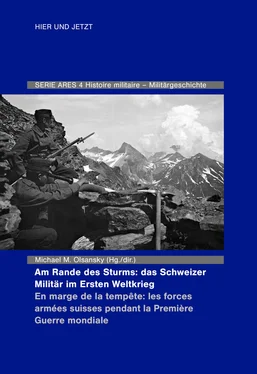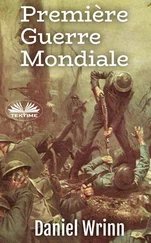1 ...7 8 9 11 12 13 ...23 I agree with Wim Klinkert that there were obvious differences between neutrals and belligerents during the First World War, but, I would argue, what neutrals and belligerents had in common was far more important. They were all involved in some vital way in the industrial total war that engulfed the world. In other words, neutrals did not exist outside the war but were very much agents in the war. Their relationships with the belligerents and with other neutrals made a significant impact on the conduct of the war, including its strategic, economic, military and political, humanitarian, diplomatic and cultural elements. From this perspective, it seems unnatural and incomplete to write a history of the war without the neutrals or without discussing the roles played by neutrality and belligerency. The totality of the war is inexplicable without the neutrals. As much as the limited wars of the nineteenth century were defined by the place and conduct of neutrals in them, as much can the parameters of total war during the First World War be delineated by the role played by neutrals.
Of course, it is important that no two neutrals were quite the same: Switzerland was not the Netherlands and nothing like Argentina. Samuël Huizinga and Johan de Hertog, for example, make a persuasive case for considering the «many neutralities of the First World War». But that is not an argument for studying each outside the context of the others. For where there were many neutralities, there were also «many belligerencies». 22Furthermore, the societies that remained neutral through the war tended to approach the post-war world differently from those that had become belligerents. 23The post-war order was in large part shaped by the belligerents’ expectations of collective security. The neutrals, including Switzerland, had a difficult time in safeguarding their neutralised position in that new order. In fact, if you are to believe the British Foreign Office, neutrality could not exist in the League of Nations era at all. It declared in 1929 «there can be no neutral rights for there can be no neutrals». 24This world of collective security presented Switzerland, as the only remaining permanent neutral, with unique challenges. At this stage, it is worth quoting the international lawyer, Lassa Oppenheim’s prediction about permanent neutrals in 1906: «Neutralised States in existence – namely, Switzerland, Belgium, and Luxembourg – are a product of the nineteenth century only, and it remains to be seen whether neutralisation can stand the test of history». 25The First World War suggests that it could, but it left Switzerland in a precarious and unique position.
Oppenheim’s statement offers further weight to the argument that the history of neutrals in the First World War is essential at every level of analysis, be it social, cultural, political, military or economic. Such history has transnational application. The military history of Switzerland in the First World War should, therefore, have an impact on the military history of the war more widely. Above all, any study of the neutral Swiss in the war underpins an understanding of what this conflict meant as a «total war» and offers an opportunity to fully integrate the war history of neutrals into the history of the war.
When we integrate neutrality into the mainstream history of the war, it brings out numerous developments. Firstly, it brings out the role neutrals played as cogs in the economic war: which might result in studies looking at differing interpretations of the morality of neutrality, for the First World War also returned neutrality to a «just war» compass and invoked the notion of immoral neutrality and profiteering. Secondly, a study of neutrals in the war highlights how important neutrals were as humanitarian agents, not only in terms of the Red Cross, the internment of belligerent soldiers, aid to prisoners of war and prisoner-of-war exchanges, but also in terms of «good offices» and reporting on excessive state violence and genocide (for example, the Armenian genocide might have gone undocumented were it not for neutral commentators in the Ottoman Empire). 26Thirdly, integrating neutrals would highlight that neutral territory had eminent geo-strategic significance and is an essential part of the military history of the conflict. The entry into the war of neutral Greece, Persia and the United States, for example, changed the global scope of the military conflict, but so did the use of neutral territory (be it in Switzerland or elsewhere) for espionage. 27
Such approaches to integrating neutrals into the narrative of the First World War help to signal the heightened stakes for victory of the belligerents. It proffers a context in which to understand how the war totalised. That is to say, by focussing on the belligerents’ relationship with neutrals, we can chart how the checks and balances of the nineteenth-century international system broke down between 1914 and 1918 and reiterate just how hard it was in the post-war era to create a stable international system. It would also illustrate that the history of the neutrality of states that became belligerents was as important as the history of the neutrality of the states that remained neutral. The neutral histories of Italy, China, Romania and Greece, let alone the United States, are as important to understanding the war as the history of their belligerency.
Neutrality was an essential element of the history of the First World War. Switzerland was a key part of that history and its experiences should be integrated into the war history more generally. Above all, the war was a total war as much as it was a war of neutrals. Or, as William Mulligan argues: «Peace was at the centre of the First World War, providing meaning to the conflict.» 28As Mulligan also argues: during the war, every government had to frame their policy making within the public sphere. Any measures taken (be it by a belligerent or neutral government) had to be «justified against the political and moral principles at stake in the war», which as Jean-Jacques Becker suggests were increasingly nationalised and aggressive. 29In that environment, neutrality’s value teetered and recovered with immense difficulty after 1918. Neutrals were no longer the world’s pacigérants. They did not manage the peace. Or, as the British commentators T. H. Lawrence and Malcolm Carter suggested in 1915:
«Neutrals, and all who care for neutrality, are faced by the question whether hostilities may be carried on without regard to neutral rights, or only according to the rules that create and protect such rights. The importance of the matter can hardly be exaggerated. Those who deal with it must first make up their minds whether they desire the international society of the future to be organised and governed in the interests of war or of peace.» 30
Such connections leave us with the exciting possibility to do transnational research and comparative analysis beyond comparing belligerents with belligerents. Integrating neutrals into the 1914–1918 story offers the potential to truly globalise the history of the First World War.
1 Bichenko, Hugh: «Total War», in: Evans, Richard (ed.): Oxford Companion to Military History. Oxford 2001, online edition, np.
2 Ibid.
3 Hew Strachan is an exception: Strachan, Hew: «On Total War and Modern War», International History Review 22 (2000), pp. 341–370.
4 For more: Abbenhuis, Maartje; Tames, Ismee: Global War, Global Catastrophe: Neutrals, Belligerents and the Transformation of the First World War. London forthcoming 2020.
5 Klinkert, Wim: Defending Neutrality: The Netherlands Prepares for War 1900–1925. Leiden 2013, p. 6.
6 Klinkert, Wim: «Van Waterloo tot Uruzgan. De Militaire Identiteit van Nederland», Militaire Spectator 177 (2008), pp. 436–448, here p. 433; Klinkert, Defending, p. 6.
Читать дальше












